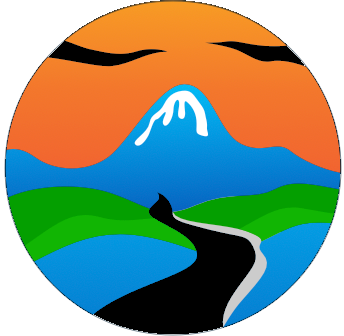Land Between the Lakes: Elk
I woke up in the parking lot of a Cracker Barrel off I-24 in southern Illinois, though “woke up” might be generous. I’m not sure I ever really slept. It was easily the loudest spot I’ve stayed all year. Truck stops surrounded the place, and it sounded like every driver was testing their air brakes at 3 a.m. Trains roared through every hour or so, horns blaring like clockwork. Add in motorcycles and pickup trucks with straight pipes, and it was a full-on symphony of chaos.
By sunrise, I gave up on sleep entirely. The lot was packed with every kind of rig imaginable—RVs, fifth wheels, vans like mine—all strung out along one of the busiest north–south routes in the country. I went inside and had French toast and orange juice. I didn’t feel like cooking.
By afternoon, I crossed into Kentucky and rolled into Land Between the Lakes National Recreation Area, not expecting much with the ongoing government shutdown. The first campground I tried wasn’t going to work—too many trees, too uneven—so I drove on to the Visitor Center. To my surprise, it was open. The guy at the desk told me he wasn’t a federal employee, which explained why he was still there. I tried booking a site online, but the system was down. He set up an account for me, though I was never able to log in.
Land Between the Lakes, or LBL as locals call it, is a massive peninsula sandwiched between Kentucky Lake and Lake Barkley. It’s one of the largest inland recreation areas in the eastern U.S., with more than 170,000 acres of forests, open meadows, and shoreline. There are scenic drives, hiking and biking trails, primitive and developed campgrounds, a planetarium, an 1850s working farm, and even a section where bison and elk roam freely. It’s the kind of place that could easily fill a week or more if everything were open.
Even with the shutdown, the scale of the place was impressive. You can drive for miles under tree-covered roads that open suddenly to water views or grassy prairies. It has that quiet, timeless feel you get in large natural spaces where the modern world seems to thin out just a little.
The ranger had mentioned Energy Lake Campground as his favorite, but it was closed off, the access road gated. So I headed north to Hillman Ferry Campground. By the time I got there, I was running on fumes—no sleep, too much noise, too many miles. At the gate, I asked for a site with the least tree cover for Starlink. The ranger thought about it, listed a few open spots, and I took her suggestion. I parked, leveled the van, and crashed hard.
Elk & Bison Prairie
Around five o’clock, I drove out to the Elk & Bison Prairie, about twenty minutes from camp. I’d never seen elk before, and this seemed like my shot. The prairie is a 700-acre enclosure where herds roam freely, a reminder of what this region looked like centuries ago before the forests were cleared and farmland took over.
At the gate, four cars were lined up ahead of me, waiting on a driver struggling with the credit card machine. Ten minutes later, the barrier lifted, and we eased inside. The $5 entry fee turned out to be worth every cent.
Not far in, I pulled over to switch lenses, and when I looked up, an elk stood half-hidden among the trees, staring right back at me. For the next hour and a half, I crept along the loop road, stopping often to photograph them—massive, silent animals moving through the late-day light like ghosts of the prairie. I never did see any bison, but by sunset, the quiet and the golden light made up for everything the night before had taken away.
As I drove back to camp, the light faded to blue and the woods turned still. The air was cool, the kind that hints at autumn settling in for good. I made a simple dinner in the van, caught up on a bit of writing, and watched the stars blink through the breaks in the trees. Tomorrow, I planned a gravel bike ride, but for now, it felt good just to stop moving.





